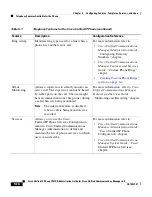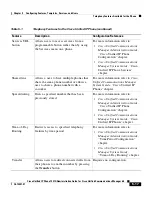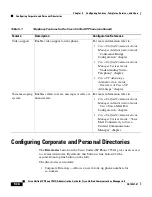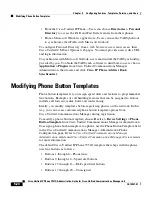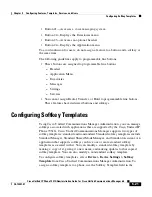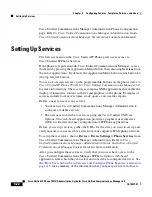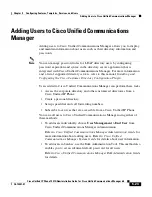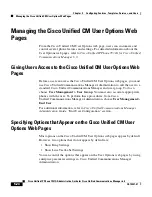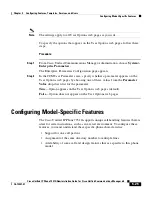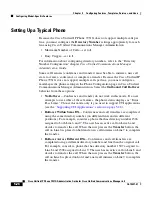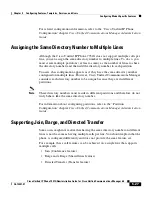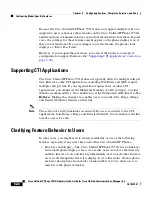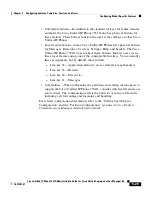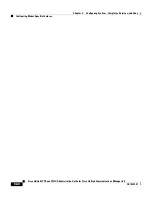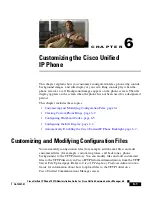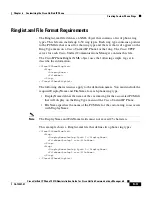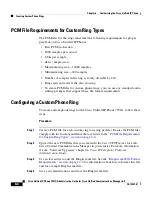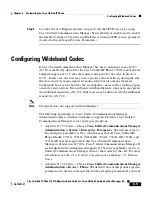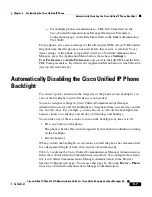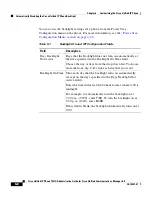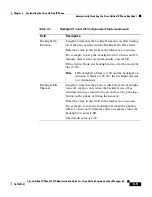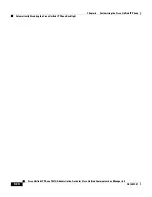
Chapter 5 Configuring Features, Templates, Services, and Users
Configuring Model-Specific Features
5-28
Cisco Unified IP Phone 7931G Administration Guide for Cisco Unified Communications Manager 6.0
OL-12457-01
Because the Cisco Unified IP Phone 7931G does not support multiple calls on a
single line, users cannot use these features on the Cisco Unified IP Phone 7931G,
and the end-user documentation does not include information about them. In some
cases, the softkeys for these features might appear on the phone display even if
they are not functional. If a user attempts to use the feature, the phone status
displays as “Error Pass Limit.”
However, if you require these features, you can set the phone to an atypical
configuration to support them (see the
“Supporting CTI Applications” section on
page 5-28
).
Supporting CTI Applications
The Cisco Unified IP Phone 7931G does not typically allow for multiple calls per
line. However, some CTI applications, including WebDialer and QRT, require
multiple calls per line. If your organization requires these or other CTI
applications, you should set the Maximum Number of Calls setting to 2 (rather
than the recommended 1). You should also set the Outbound Call Rollover to
No
Rollove
r. Making this change also enables users to use the Join, Barge, cBarge,
and Directed Transfer features on that line.
Note
The call is not a fully functional second call. Its use is restricted to the CTI
applications, Join, Barge, cBarge, and Directed Transfer. Users cannot use the line
to make or receive calls.
Clarifying Feature Behavior to Users
In some cases, you might need to clarify availability or use of the following
features, especially if any users have used other Cisco Unified IP Phones:
•
Line keys and display—The Cisco Unified IP Phone 7931G has 24 line keys
and a small phone display screen. As a result, users do not see the directory
number, line text, icon, and line key immediately next to each other. Instead,
users scroll through the Overview display to view line status. On this phone,
each text description also includes a Line number (1-24) to allow users to
match it to the physical line key.



